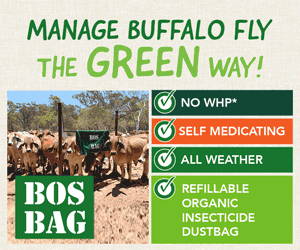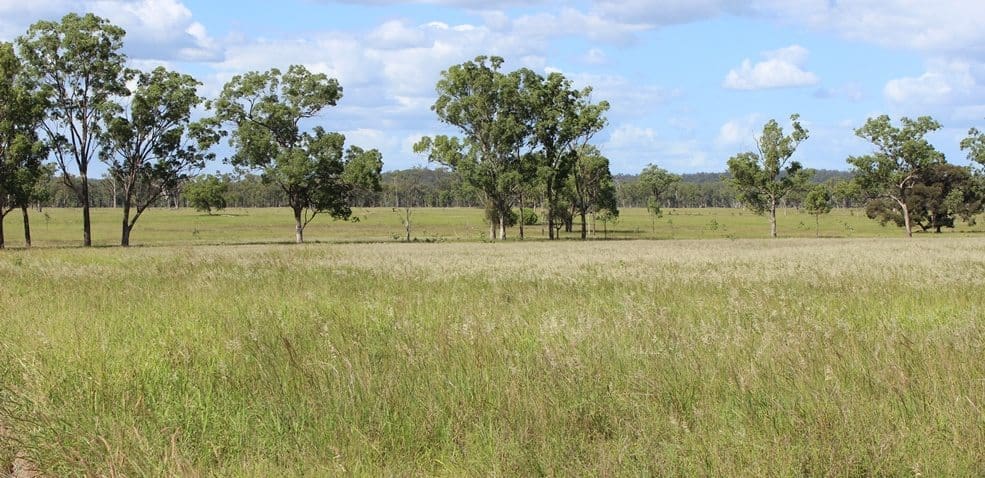QUEENSLAND beef producers have again been the subject of a series of a land clearing complaints, with two groups attacking the industry over the number trees being knocked down for beef production.
The newest criticism has come from the Queensland Conservation Council with a series of claims about the industry – including that between 2014 and 2019, 78 percent of deforestation of endangered regional ecosystems was for pasture and that beef pastures destroyed habitats for 388 nationally threatened species and 14 threatened ecological communities.
QCC has also been encouraging its members to email Premier Anastacia Palaszczuk and strengthen vegetation management laws.
A week before, the Australian Conservation Foundation claimed that more than 400,000 hectares of habitat for threatened species and ecological communities was cleared in Queensland—without approval or assessment from the federal regulator.
The ACF claims have been heavily refuted by Qld’s state farm organisation Agforce, with CEO Michael Guerin penning an opinion article calling for the organisation to look at the nuances of the data they used.
Mr Guerin said this year’s Statewide Landcover and Trees Survey (SLATS) – a Qld Government satellite benchmark for tracking tree coverage, revealed 0.2pc of regulated vegetation in the state was cleared for sustainable production in 2018/19, and that the limited amount of unexplained clearing of remnant vegetation has remained the same since 2017 – at 0.04pc of the vegetative cover.
“In reality, there has been no significant clearing of trees in Queensland, and sensational claims of land clearing the size of football pitches are just not true,” he said.
“Our farmers value protected plant and animal species, and they are united in their desire to produce safe, delicious, healthy food for the rest of us in Australia and throughout the world.”
Tough cop on the beat
Beef Central contacted the Federal regulator, the Department of Climate Change and Energy, to see if it was looking into the ACF claims. A spokesperson said clearing fell under state law and directed us to a review being undertaken environment minister Tanya Plibersek’s department.
A spokesperson Ms Plibersek said the Federal Government looking to put a “tough cop on the beat” of land clearing.
“Tomorrow, the Government will deliver a full response to the Samuel Review. This will outline the government’s reform directions to protect, manage and restore our environment, including addressing concerns around the cumulative impacts of regulated and unregulated land use,” the spokesperson said.
“A key component of the response will be outlining the next steps to deliver a national Environment Protection Agency (EPA), a tough cop on the beat, resourced and empowered to enforce Australia’s national environmental laws.
“The government has also committed to introduce new legislation in 2023 and to engage on its development with a broad range of stakeholders and partners, including First Nations groups, business, environment groups, scientists and state and territory governments.
“Proposed legislative reforms will modernise the available compliance and enforcement provisions.”
Call to incentivise rather than penalise
Land clearing laws have been a political football for decades and one of the country’s largest carbon aggregators is calling for governments to rethink their approach to land clearing.
GreenCollar chief executive and co-founder James Schultz said the company would like to see more incentives to not clear land, rather than rely on legislation.
“We have been trying to address land clearing in this country for a very long time and it is generally to the farmers’ detriment,” Mr Schultz said.
“We try and solve the problem by putting in a law that says, ‘you can’t do it’, then there is a change of government and the law is repealed.
“It does not deliver good conservation outcomes if you have legislation that comes in and goes out. Landholders are confused about what they can and cannot do and it often drives opportunistic clearing because people are worried they will lose the right to clear.”
The carbon market is one of the Australia’s main policies designed to incentivise the reduction of land clear – with avoided clearing one of the most common ways of generating Australian Carbon Credit Units.
GreenCollar has been a supporter of the developing biodiversity market, which was announced by the previous Federal Government. The company has made its own biodiversity conservation and crediting scheme called Nature Plus.
 “We are particularly interested in areas where carbon might not be the appropriate tool,” Mr Schultz said.
“We are particularly interested in areas where carbon might not be the appropriate tool,” Mr Schultz said.
“You might have an area of protected koala habitat, where you can’t clear it but you are still grazing through it, than there may be some management you can use to enhance it as koala habitat – like weed or feral animal control.
“We want to see things that reward landholders that rewards management that delivers good agricultural outcomes and good conservation outcomes at the same time.”
Mr Schultz said clearing was not always essential to increasing the economic viability of a farm.
“We have a big land clearing footprint in this country, significantly higher than it needs to be,” he said.
“Clearing is one of the ways to manage land, but it is not the only way to do it. If you were getting paid for keeping trees in the ground, you can put that money into infrastructure and intensification efforts in other parts of the farm.”
- Beef Central will have a follow up article looking at how the carbon farming framework may be increasing the rate of clearing


We are confused for sure. Those of us who for 50 years
plus only farmed/cleared land in sections and took into account sustainable practices now find that we are unfairly being penalised. No credit for our sensible approaches rather demonised with anti development management laws whilst carrying the financial cost on behalf of all landowners.
Cleary no comment about the clear felling of sensitive vegation to feed the insatiable demand of urbanisiation around our capitals & major growth centres
Mr Schultz has a very relevant point regarding uncertainty around changing veg management laws potentially generating perverse environmental outcomes. However to state that we have a big land clearing footprint and that it is significantly higher than it needs to be is generally false albeit somewhat expected from the CEO of a company who profits from avoided clearing.
Government needs to learn to work with landholders better to understand what they’re trying to achieve in terms of production and ecological goals as so often there’s a very sweet spot.
“Land clearing”
A very emotive term which has lost any real meaning
Is this the wholesale removal of all trees or is it simply producers managing to restore or maintain the landscape at a productive state which delivers benefits to all stakeholders ?
Have we even decided what the landscape should ?
The “ greenies “ think producers want to “pull” or poison all trees to achieve an open landscape
Most producers know keeping the landscape open and productive is a very expensive operation and requires constant management and not done lightly
The objective scientists also know that the pre European landscape was more open than now but a mosaic of varied vegetation types which the indigenous managed with fire – could we even say they “ farmed “ the landscape ?
Producers have been led to believe the community wishes to have a very closed landscape to store carbon and promote biodiversity ( but of a closed community not an open one! )
Yet at the same time there is a growing acceptance that the indigenous landscape was formed by fire
No wonder producers are confused especially as they were once ( and maybe again ? ) directed to feed the mother country plus more recently Asia
Producers are confused with these conflicting messages plus the widespread tree mortality from the 2019 and previous droughts indicates the Landscspe can only support so much biomass
It is about time the community sends a sensible coherent message with a management plan to maintain the landscape they wish . It we leave the landscape alone it goes feral and we all lose
We need to balance production with conservation to achieve a sustainable landscape
And do not p.., off the producers as they are the ones who will make it happen
Mt Schultz might also explain how producers can remain viable with heavily timbered country in a drought . Because it has defied most producers and woodland scientists